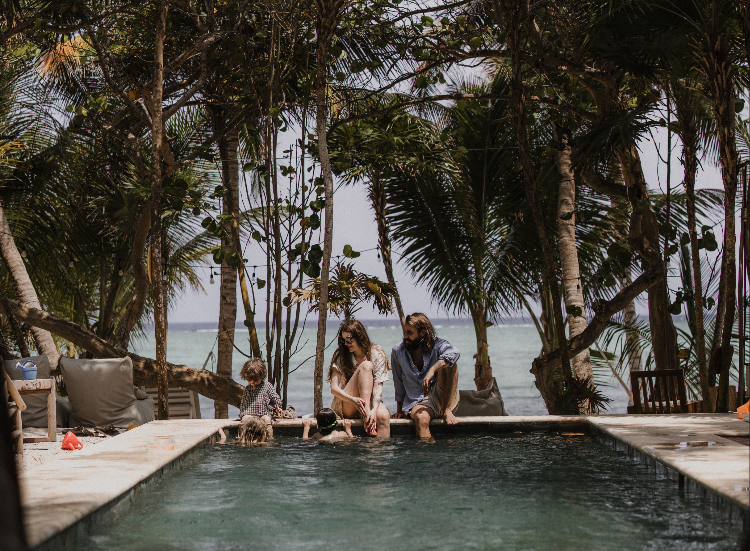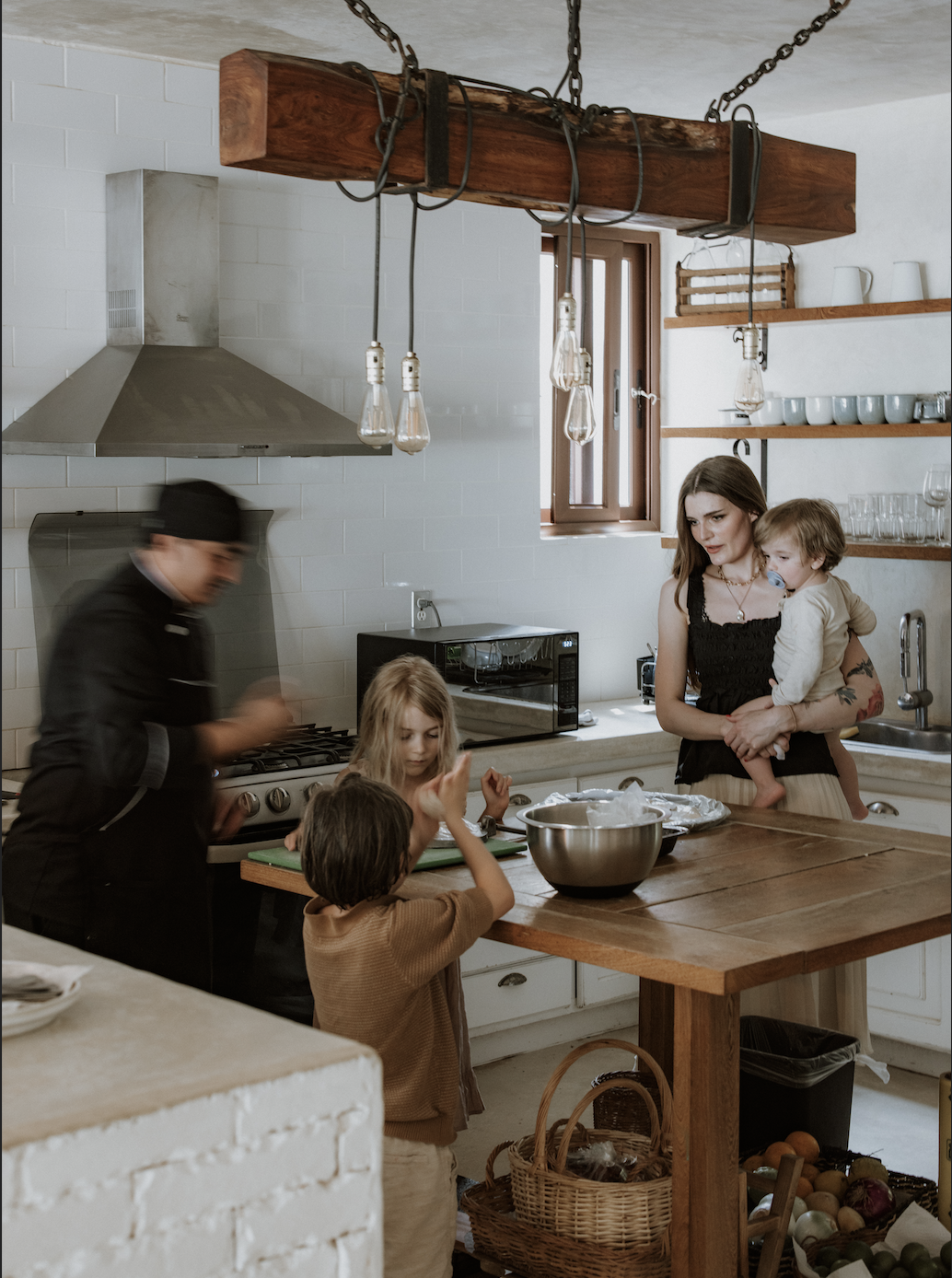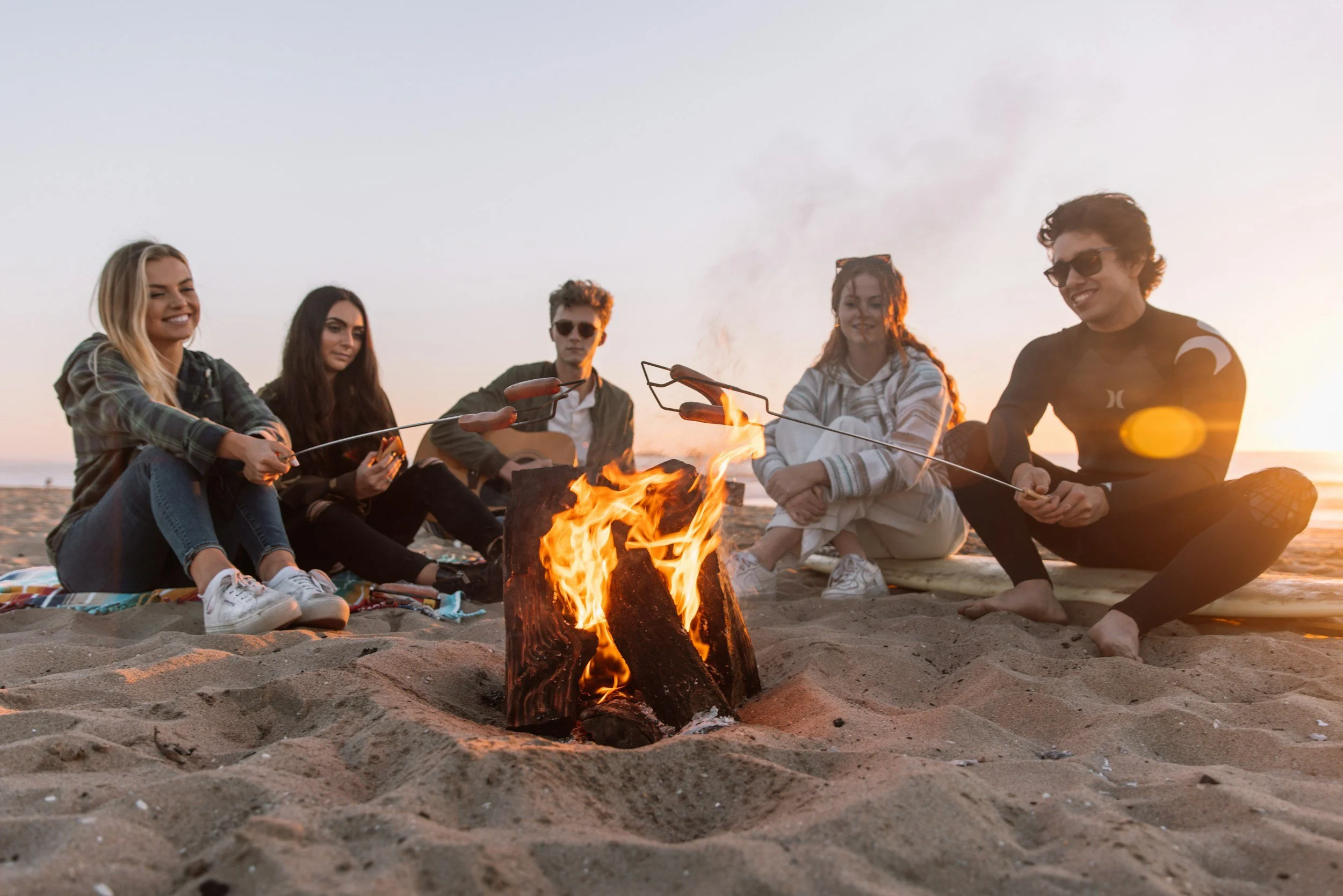A Maya Luxe Spotlight on Carlos Alamillo: Local Architect & Restaurant Owner
Written by Dena DaSilva
Maya Luxe lives by a basic philosophy to develop a sense of community and make responsible decisions to reduce negative impacts on the environment. We love to highlight local residents and visitors who feel the same and give back to the community in some way. Either contributing to the greater good of the community philanthropically, or in a way that supports environmental sustainability.
Local businessman, Carlos Alamillo, matches this philosophy perfectly. He’s the owner/architect of Que Huevos restaurant in the heart of Playa. We highlighted Que Huevos in our magazine article The Gastronomical Wonders of the Riviera Maya as his style of decor and the inventive menu offers Playa del Carmen something new. This fresh and creative cafe serves comfort food for both breakfast and lunch. It’s a great laid back corner spot to enjoy a coffee, work from your laptop, convene with friends, or just enjoy some good homestyle food.
Other than being a restaurateur and foodie, Carlos’ main occupation is as an architect. He’s from Mexico City and has been living in Playa for 20 years. He’s very well known in this area and he’s important to us because of his continued focus on eco-sustainability and building a sense of community with each and every one of his unique projects.
Carlos learned the architecture trade from his father who taught him from an early age how to visualize and put the pencil to paper. He got the opportunity to be part of different architecture firms which all helped develop and shape his unique style. As an architect, he considers himself very versatile and well trained in different disciplines. Carlos has had his own architectural firm for almost 25 years, the ALAMILLO DESIGN STUDIO.
We sat down with Carlos over coffee, at his popular Que Huevos eatery, to learn more about his experiences as an architect and where some of his influences and style came from. Also to learn when integrating sustainability into his projects became a focal point.
Maya Luxe: Carlos, over time you’ve developed your own unique style. Tell us about that. What were your influences and inspiration?
Carlos: My style has been developed over time and created by my everyday experiences. For example, when I was a kid, I remember the way my dad would dress and go to work and how he’d sketch the most basic thing and form it into a building facade. I still remember sitting on his lap one day and he asked me if he should lower that project he was working on or raise it up in order to control the rainwater. As if I, as a small child, was supposed to decide! Now I do this with my kids. He also had very strong hands —he was a frontenis player as well as an architect— so he had these calluses all over them and a very distinctive way to hold a pencil when he sketched. He’s had a great impact on my life and will always be a great inspiration. When I got older and began working as an architect myself. I worked all over Mexico City developing an urban style, completely minimal yet functional and trendy, and almost always an “outside-the-box” kind of style.
When I arrived to the Riviera Maya 20 years ago, I was designing little bars….Bar Fly, Playasia, Moon, Impala, Fusion...to name a few. I was also working in the jungle, in SacBe. Here, I met another of my great influences, Memo Siliceo. I led one of his construction teams and had to resolve everything in an organic way. There were no plans, no trends, no prefab, just logs and stones and organic material laying around. I had to prepare and soften these pieces to place them correctly for building structures. It was almost like being a sculptor in a way, no rules, just pure beauty! From that experience, I designed several off-the-grid houses in Tulum.
Now today, I always combine these two styles. You could call it industrial-tropical or tropi-hop. Some have called me a minimal-organic or technical surrealistic.
I have projects in Canada now, so I’ve been evolving and using different materials —materials that have to last, due to the climate changes for example. My current projects include functional basements, garbage management, permaculture, woodcraft with vintage/antique barn wood, and so on. I’m excited to see what new styles emerge!
Maya Luxe: How and when did it become important to you to encourage a sense of community and integrate sustainability into your projects? And can you give us some examples?
Carlos: Sustainability used to be a unique thing but now, not only is everybody doing it, but they have to. For me, it’s always been important to integrate eco-techniques into my projects.
Maya Luxe: This reminds me, and it should be noted, there’s a segment on The Discovery Channel that you’re featured in called How Do They Do It. I remember the show from a few years ago about how a Tulum beach resort delivers world-class hospitality without harming the environment. On this segment, as an expert in eco-building techniques, you demonstrated a way to create a model for sustainable tourism and ways to reduce energy consumption using innovative solutions. It was interesting how you used naturally cooling stone and specific designs to channel the breeze in order to reduce the need for air conditioning.
Carlos: Yes that’s true. In addition, different projects require different sustainable solutions. Here in the Riviera Maya, I find that the most important environmental concern is to implement a way to protect the underground river systems. For example, tourists and people living here in Playa del Carmen are using the bathroom a few times daily and this waste stays in the soil and later ends up in the ocean. So what we did at Cancun’s Del Mar Waldorf Initiative School is implemented a new, innovative idea called composting toilets. These literally convert waste into usable compost! This way there’s no need for street drainage systems nor a septic tank. We use gravity and distance to separate waste very very fast from the water that is carrying it and once it’s separated, we trap the waste inside a composting box consisting of coconut fiber, sawdust, and leaves. The rest of the water, after the solids have been removed, can be treated in what is known as a humedal, or a constructed wetland, with sanitation technology used to treat wastewater. Different stones and gravel are used at the bottom as a biofilter to remove pollutants and it creates a source of nutrients for local high absorption plants like banana trees and other plants that we place on top. The big difference with ours, as compared to others, is that ours don’t overflow because they’re 65.6 (20 meters) long. The ones I’ve seen in Tulum are 9.8 feet (3 meters) long and have a tendency to overflow and cause a bad odor when they do.
Right now we have 100 school kids and 15 teachers using this composting system at the school and it’s proven to work very well there. There’s no return of wastewater to the ground. It all evaporates and becomes part of another lifecycle in the composting system. The solid waste is kept in a sealed box with no light, where worms and bacteria do their job inside of a sea of coconut fiber so it creates no odor. Within a year you can use this compost to fertilize your garden or feed your chicken farm, etc. It’s a very promising system that we’re hoping to implement in more places around the Riviera Maya.
Maya Luxe: What advice would you give to a business owner looking to start a business here in Playa (in the Riviera Maya)?
Carlos: Tropicalize yourself! This word “tropicalization” is a word lawyers use to refer to contracts that have to be adapted to a local zone. Also, carpenters use it when wood moves and takes its real form after a few months and after suffering from different weather conditions. I use this word because I see people wanting to do business exactly as they do in their own country and that is the first red flag. It usually ends up catastrophic. In sustainable design, adapting is key. You can see it in many forms in nature and in animal behavior. So my recommendation is to bring your ideas to the table but in a tropical way. This way you don’t suffer from lack of materials or human resources, flavors, textures, etc. This idea opens a whole new possibility for entrepreneurs to bring their identity out, complemented by the local culture. Usually something outstanding comes out of it and that’s what brings so much unique diversity to Playa!
Another thing I’ve started is what I’m calling an Urban Sustainability Mission. This is a mission to propose to all business owners in Playa the idea to “adopt your corner.” By this I mean keep your corner clean and thriving. For example, on my 4-corner area here at Que Huevos, we’ve planted plants and water them daily, sweep it daily, pick up our garbage, and make it better every day. Remember, there are 4 corners, not just one! We’ve gotten everyone involved on our 4 corners and now everyone’s engaged and working together to keep this block’s corner of 48th Street and 5th Avenue looking gorgeous! If everyone adopted this idea, just think of how clean the world would be! I also have another idea/creation in mind that I’m developing called “The Power Tower.” I have some drafts of the Power Tower and the Power Tower II on my Facebook page if interested in learning more.
Finley’s.
Chez Celine.
Maya Luxe: On a day off in Playa or if you had friends or family members in town, what would your ideal day look like or your top three favorite things to do?
Carlos: Well, there are so many great places to have a meal here in Playa. My favorite place to eat is at Unos Marisquitos at 8th Street and 15th Avenue. It’s by the same creator of El Doctorcito, both in Playa. And of course, I love the chorizo egg tacos here at Que Huevos! I also love to get up early to catch the sunrise. I love to take a walk and breathe in the morning air and often go to the place on Coco Bay beach where I spread my dad’s ashes. Sometimes I’ll play Frontenis like my dad used to or play Frescobol on the beach. These are all my favorite things to do here.
My latest architectural creation is called Finley’s on 5th Avenue near 38th Street. It’s a cute diner concept enclosed with air conditioning and a great spot for burgers and fries. Check it out! It opens Monday, March 25 and it’s near a few of my other architectural projects, Chez Celine, La Brioche, Antoinette, and Trujillos.
For more about Carlos Alamillo, you can check out his company’s website or Alamillo Design Studio’s Instagram and Facebook pages. Also, keep an eye out for more from our upcoming video segments rolling out soon called Real People Unreal Experiences where we’ll highlight other residents and visitors to the Riviera Maya area who do impressive things and/or give back to the community.





















